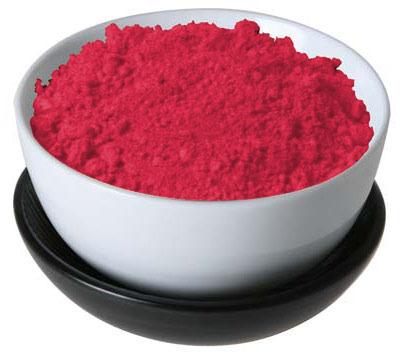
- Introduction:
Matrix Pharma Chem is a well-known amaranth manufacturer in India, known for its dedication to creating superior synthetic colorants for a range of industries. Amaranth is a water-soluble azo dye that adds a rich magenta or deep red colour to objects. It is often referred to as Food Red No. 2. Amaranth is appropriate for use in food, beverage, pharmaceutical, and cosmetic applications because of the company's sophisticated manufacturing procedures and stringent quality control systems, which guarantee that it satisfies international regulatory standards.
- Amaranth manufacturer:
Matrix Pharma Chem is a top manufacturer that concentrates on providing amaranth with remarkable stability and strong colouring qualities. Products including candy, soft drinks, jellies, syrups, and processed foods frequently employ this artificial pigment to improve their appearance. The pharmaceutical business utilizes amaranth to colour tablets, capsules, and liquid pharmaceuticals in addition to its food-grade usage, and the cosmetics industry uses it to make lipsticks and blushes. Amaranth's adaptability has cemented its position as a crucial component in numerous sectors.
Our proficiency in producing amaranth arises from its capacity to satisfy the particular needs of its customers. The company provides customization choices to meet a range of industrial applications, such as different package sizes and concentrations. Their commitment to innovation guarantees the dye's preservation of its superior performance qualities, including long shelf life, colour constancy, and good solubility. This customer-focused strategy has aided Matrix Pharma Chem in building a devoted following and a significant market share worldwide.
Specification of Amaranth:
- Chemical Name: Amaranth (Food Red No. 2).
- Chemical Composition: Synthetic azo dye.
- Appearance: Granules or powder in a deep red to magenta color.
- Solubility: Water solubility is high, while ethanol solubility is limited.
- Purity: High quality and low impurity content (according to international norms).
- pH Range: It works best in slightly acidic to neutral environments and is stable over a wide pH range.
- Shelf Life: Generally, 2 to 3 years if kept in a dry, cold location.
We are prioritizing safety and regulatory compliance in addition to quality and performance when producing amaranth. The business makes certain that its goods meet the strict safety standards established by regulatory agencies including the FDA, EU, and FSSAI. Following these guidelines gives producers and end users alike peace of mind by ensuring that their amaranth is safe for use in a variety of applications.
Additionally, Matrix Pharma Chem is dedicated to ethical and sustainable manufacturing methods. The business uses eco-friendly procedures and ethically sources raw materials in an effort to reduce its negative effects on the environment. In addition to improving company reputation, this emphasis on sustainability satisfies the market's increasing need for ecologically friendly products.
- Conclusion:
Matrix Pharma Chems reputation is a well-known amaranth manufacturer in India is based on its commitment to quality, innovation, and client satisfaction. In order to continue meeting the various demands of industries around the world, the company produces high-performance and compliance goods. Businesses looking for dependable and colourful colouring solutions continue to turn to Matrix Pharma Chem as a trusted partner because of its emphasis on sustainability and cutting-edge manufacturing techniques.
